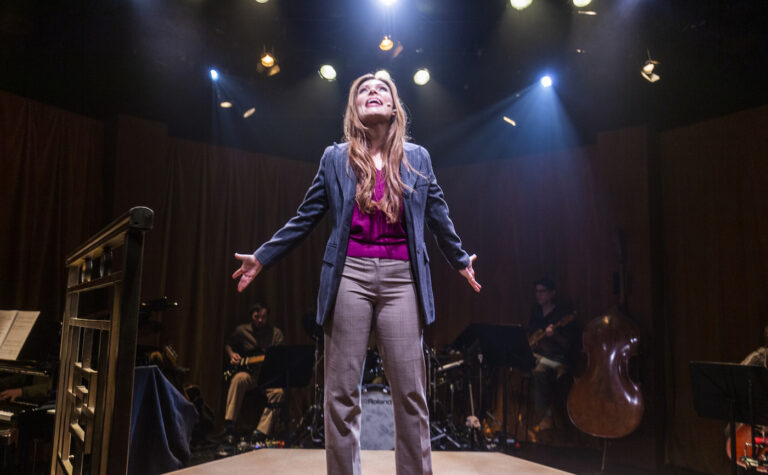
The ugly face of racism

BY VANESSA LIM
Yearly Chinese New Year celebrations lit up all of Sydney last week, but Chinese people still experience discrimination within the local Sydney community.
Chinese people make up 24.6% of Sydney but the colourful celebrations weren’t enough to hide racism experienced by some Chinese people in Sydney.
For example, 19-year-old “Bobby,” who is using an alias in this article to protect his identity, is all too familiar with racism expressed against him and his family.
When asked about his experiences, he described a scenario when an angry Caucasian family told his grandfather to vacate disabled seats at Central Station.
Family left shaken by attack
Bobby said, “The lady tried attacking and tackling my grandpa but she was stopped by another passenger who blocked her.
“Then she shouted insults at us, like calling us ‘chinks’, and saying our culture is ‘disgusting’. She walked upstairs on the train and continued to shout insults. She tried to get the other passengers on her side.”
Despite other young passengers sitting on the disabled seats, Bobby’s family was directly attacked. Unfortunately, 34.8% of people who experience racism say it is on public transport or on the street.
“The lady yelled, “MOVE!” as soon as she saw us. We were all shocked but since she had a baby, my aunt and I moved hesitantly.
“She then demanded my grandparents’ seats and my grandparents are both over 80 years old.”
“We said ‘no’ because senior citizens are allowed to sit on public transport anyways and there was more than enough room for the lady to sit down.”
These experiences left Bobby and his family shaken.
“The lady kept looking in my direction and I thought she’d attack. I kept wanting to retaliate, but my family said we shouldn’t bother with low-class uneducated racists.
“I got scared, and I got nervous. But I wished to speak up.”
Racial attacks not only occur on a large scale but also in smaller incidents. Bobby mentioned his casual racist experiences, when he and his family were the butt of comments such as, “you eat dog,” “whites are superior to chinks” and more.
According to a national survey conducted by Western Sydney University’s Challenging Racism Project 2015-2016, 80.4% of people supported diversity, 4.4% of people were against and the rest were undecided.
The project also revealed that 7% of Australians had negative feelings towards Asian-Australians while the rest were neutral or positive.
Even though the most reported racial discrimination complaints occurred in Inner Sydney and the Eastern suburbs, overall, these areas also have the least racism in comparison to rural and western Sydney.
However, regardless of the high percentage of supporters, a minority still undermine it.
The Western Sydney University’s Bystander Anti-Racism Project identified common tactics used by bystanders who intervened in racist incidents, such as, “confronting or disagreeing with the perpetrator,” “reporting it to the authorities,” or “expressing upset feelings”.
The Project also mentioned the reasons why bystanders don’t intervene. These included “a perception that action would be ineffective,” “fear of violence or vilification,” “being targeted by the perpetrator,” or “lack of knowledge of how to intervene”.
According to the Bystander Anti-Racism Project, being aware of what racism is defined as, the harm it can cause, and a perceived ability of how to intervene are just some of the ways bystanders can be more proactive.
School education critical
Educating people about racism in schools is also important to make sure young people get it right early.
Bobby details an experience of a half-Chinese half-Caucasian student in his high school whose racist remarks were directed against his own Chinese ancestry as well.
Bobby said, “He was super pro-white and he’d make that very clear in front of everyone.
“He would say positive things about white people but was against Chinese things.
“On the bus he and some white kids were talking about being white. He was saying he’s basically white except with the Asian eyes and things such as that.
“When people pointed out he was half-Chinese, he would get defensive.
“He would sit with the white kids, which was very obvious because my school was mainly Asian.”
According to the 2017 project Promoting Intercultural Understanding through Student Exchange, a city-country multi-school program found that cross-cultural contact is the most effective way for people to open up to other cultures. It is also noted that there should be opportunities for detailed and continuous interactions.
These chances for more interactions between cultures should be encouraged in high school.
While 8/10 high school students have not experienced racism, according to this report, it noted that those who did experienced it in school.
By encouraging inclusivity and a more open conversation, Chinese people such as Bobby will be less likely to experience racism in Australia.









